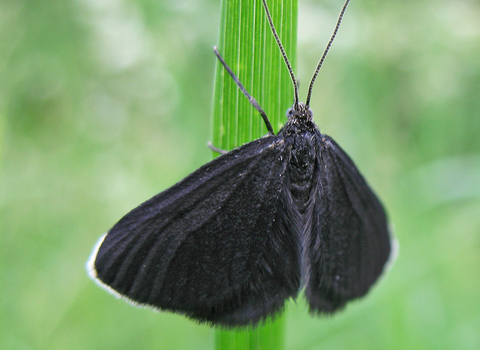
Chimney sweeper © Rachel Scopes
Chimney sweeper
This sooty-black, day-flying moth is active on sunny days, rarely settling in one place for long.
Scientific name
Odezia atrataWhen to see
Adults fly in June and July, sometimes into AugustSpecies information
About
The chimney sweeper is a day-flying moth that can be seen flying in June and July. In the south of its UK range, it is mostly found on chalk or limestone grasslands. Further north it is more common and lives in a wider range of habitats, especially along streams and in other damp, grassy places.Chimney sweepers fly on sunny days, though males may also fly in more overcast conditions. They often perch on tall grasses and at suitable sites can be seen in large numbers, making for an impressive spectacle!
